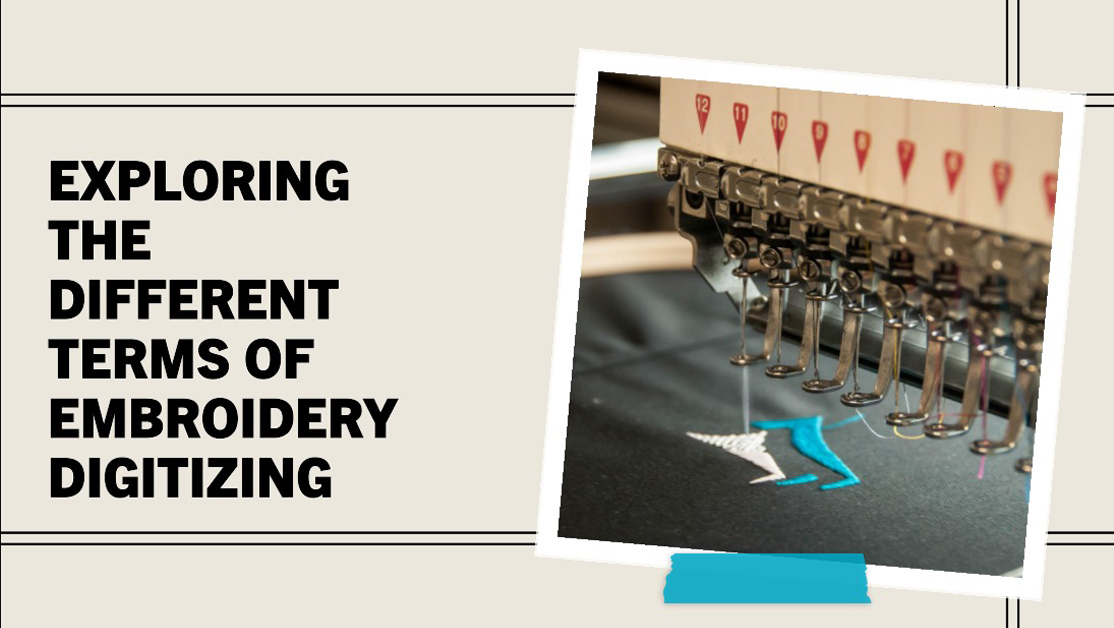
Exploring the Different Terms of Embroidery Digitizing
Embroidery digitizing is a specialized process that transforms artwork or designs into digital files that embroidery machines can understand and replicate on fabric. This intricate craft comes with its own set of terms and jargon that may be unfamiliar to the uninitiated. Let's delve into some of the key terms associated with embroidery digitizing:
Digitizing:
The fundamental process of converting a design or artwork into a digital format that can be read by an embroidery machine. This involves assigning stitches, colors, and patterns to specific elements of the design.
Stitch Types:
There are several stitch types used in embroidery digitizing, including fill stitches, satin stitches, and running stitches. Each type serves a specific purpose and can be used to create different visual effects.
Thread Density:
This term refers to the number of stitches used in a specific area of an embroidery design. A higher thread density results in a denser, more solid appearance, while lower thread density creates a more open and airy look.
Underlay:
Underlay stitches are used to stabilize the fabric and create a foundation for the main design. They help prevent puckering and distortion in the final embroidery.
Pull Compensation:
Embroidery machines exert tension on fabric, which can lead to design distortion. Pull compensation is the adjustment made in the digitizing process to counteract this tension.
Trims and Jumps:
Trims are the points in the design where the machine cuts the thread, while jumps occur when the machine moves from one section of the design to another without stitching. Proper handling of trims and jumps is crucial for a clean, seamless result.
Registration:
Registration is the precise alignment of different design elements, layers, or colors. Accurate registration is essential for creating a polished and professional appearance.
Pathing:
Pathing refers to the sequence in which the machine stitches different elements of the design. Proper pathing is critical to minimize thread breaks and optimize production speed.
Digitizing Software:
Specialized software used by digitizers to create and edit embroidery designs. Popular programs include Wilcom, Tajima, and Pulse, among others.
Embroidery Format:
Embroidery machines require designs in specific file formats, such as .DST, .PES, .EXP, or .VP3. The choice of format depends on the machine's compatibility.
Hoop Size:
Different embroidery machines come with varying hoop sizes, and designs must be digitized to fit within the designated hoop dimensions.
Push and Pull Compensation:
Push compensation deals with preventing stitches from pushing through the fabric, while pull compensation addresses the tendency of stitches to pull the fabric inward.
Color Stops:
Color stops in digitized files indicate where the machine should change thread colors. Managing color stops is essential to ensure a design is embroidered with the correct colors.
Embroidery Punching:
Embroidery punching is the process of manually or digitally creating perforations or holes in a design to create textures or unique effects, especially in fabrics. This technique allows for a three-dimensional appearance in embroidery.
Understanding these terms is essential for both embroidery digitizers and those seeking custom embroidered products. Whether you're a professional digitizer or a customer looking for high-quality embroidery, a grasp of these terms will enhance your appreciation of the artistry and technicalities behind this intricate craft.

0 Comments